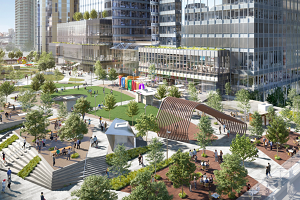 Friday, April 26, 2024
Friday, April 26, 2024  Friday, April 26, 2024
Friday, April 26, 2024 
Almost as if in direct proportion, Toronto’s lack of affordability has coincided with its increasing commuting times making the city the 6th worst city for commuting globally.
But more than ever, Toronto architects are making downtown living more attractive with condos that include enough infrastructure to make walkability scores matter.
The result?
A new generation of architects is reinventing Toronto neighbourhoods. Asaf Gottesman is a principal of the Paris-based architectural practice Gottesman-Szmelcman Architecture SARL. He specializes in the designing properties that assimilate nicely within the urban context.
“For architects, the aim is to turn a space into a destination; to imagine and develop a property so that it has intrinsic value and quality of design,” Gottesman says.
His most recent revitalization project was 90 Morton St., a former prewar publishing house transformed into 122,000 square feet of stunning high-end residences in Manhattan’s West Village. Initially, Brack Capital Real Estate, the property developer who owned 90 Morton, approached Gottesman with a problem: How to create high-end residential units in an outdated commercial space.
“People come to architects to formulate a story,” Gottesman says. “To tell that story, it’s important that we let go of preconceived ideas and concentrate on understanding all the influences that impact the space.”
According to Mr. Gottesman, this means that architects, developers and even city planners all have to move away from rigid usage designations.